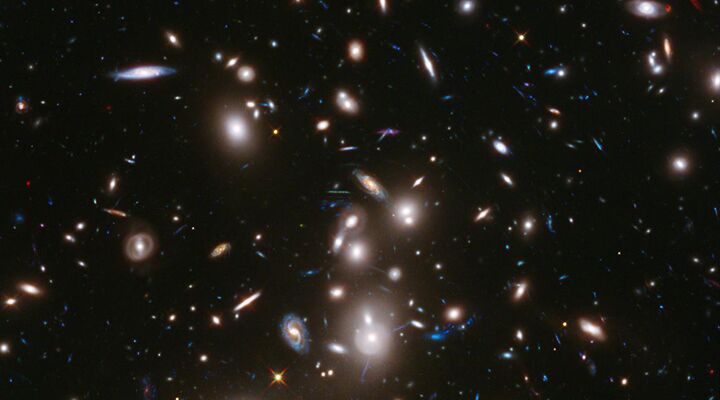
Hubble Takes Deepest Ever Picture of the Universe
The deepest ever view of the universe was published January 7, in a picture of 10,000 galaxies, many of which are believed to be 12 billion light-years away.
That’s a lot to take in from one picture. The small picture above hardly does it justice. You can find a much bigger version here.
Here’s one way to try and take in everything that it shows. Wait a bit to let the picture fill your screen and take a moment to take it all in. Then zoom in—which on most browsers will simply mean clicking on it. Wherever you zoom you’ll see swirling disks of galaxies.
Now take a moment to try and imagine the whole universe—all 1,000,000,000,000,000,000,000,000 stars (according to our current best guess), with planets hurling around them. If you spent every day and night, for your whole life, counting stars, it would still take very roughly 1,000 trillion life times to count them all.
No doubt you failed—the human imagination cannot hope to fathom numbers that large. In fact you probably failed so badly that just one of those galaxies—those small disks in the picture—is larger than your mental picture of the entire universe. You can try and comprehend the totality of existence, but just one of those disks is probably bigger than that. Billions of stars, like our sun, all in that tiny disk taking up a few pixels on your screen. And that picture is full of galaxies.
Some are 1,000 times smaller than our own, while others are 100 times bigger.
The galaxies that look bigger in the picture are roughly 2 billion light-years away—i.e. the light from those galaxies has taken 2 billion years to reach us. They’re the most visually stunning, but it is the 3,000 small blue galaxies in the background that are the most scientifically important. Those are believed to be 12 billion light-years away. “It is the deepest view of the universe ever taken,” said the project’s leader, Jennifer Lotz, from the Space Telescope Science Institute. “We’re seeing things 10 or 20 times fainter than anything we’ve seen before,” she said at a meeting of the American Astronomical Society.
The image is just the first in a series called “Frontier Fields”—the successor of Hubble’s famous Deep Field, Ultra Deep Field and Extreme Deep Field pictures of distance space.
The Frontier Field pictures will all take advantage of a natural phenomenon called “gravitational lensing”—where gravity distorts the path light takes as it travels to us. The result is similar to a badly made magnifying glass—the images of distant stars are both magnified and distorted. If you have a glass of water on hand, you can see something roughly similar just by looking through it. You can see some extreme examples of this here, here and here.
It is this lensing that makes the really distant galaxies in the picture visible. The closer galaxies are part of a massive cluster of galaxies called Abell 2744, also known as Pandora’s Cluster, formed as four clusters of galaxies come together. This cluster provides the gravity to create the lens, making it possible to see the much more distant galaxies behind it.
This picture took Hubble 67 hours of observation. It will return to photograph the same portion of sky in March. The Spitzer space telescope, which sees in infrared, and the Chandra space telescope, which sees in x-rays, are also taking part in the Frontier Fields, and will observe the same portions of sky.
But even these stunning images may be eclipsed in four years when the James Webb Space Telescope launches in October 2018. With a 6.5 meter-wide (21.3 feet) mirror, it will be able to see farther than any telescope used today.
This deep view of the universe is breathtaking to anyone who stops and thinks about it. But what makes it mind-staggering beyond words is understanding that God’s plan for mankind includes the whole universe. These pictures can stretch our vision of the fantastic future ahead for mankind and at the same time increase our appreciation of the great mind and power that created and designed all of it.
For more information on what those 12-billion light-year distant galaxies mean for you, read our free booklet Our Awesome Universe Potential.
